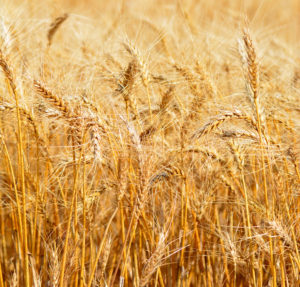Texas wheat variety ‘Picks’ for High Plains, Rolling Plains released
Writer: Kay Ledbetter, 806-677-5608, [email protected]
Contacts: Dr. Calvin Trostle, 806-746-6101, [email protected]
Dr. Jourdan Bell, 806-677-5600, [email protected]
Dr. Emi Kimura, 940-552-9941 ext. 233, [email protected]
Dr. Clark Neely, 979-862-1412, [email protected]
AMARILLO – The Texas A&M AgriLife Extension Service has released its “Picks” of annual grain wheat varieties for the 2016-2017 cropping season in the High Plains and Rolling Plains.

Dr. Jourdan Bell, Dr. Calvin Trostle and Dr. Emi Kimura, AgriLife Extension agronomists from Amarillo, Lubbock and Vernon, respectively, along with statewide small grains and oilseed specialist Dr. Clark Neely, compiled the list of Picks.
“Our ongoing Picks criteria include a minimum of three years of data in AgriLife wheat variety trials across numerous annual locations within each region of Texas,” said Trostle. “As we have noted before, a Pick variety means this: Given the data, these are the varieties we would choose to include and emphasize on our farm for wheat grain production.”
The data are derived from High Plains wheat grain testing coordinated by the Texas A&M AgriLife wheat breeding program based at Amarillo. Irrigated and dryland test sites range from Lamesa to Stratford, including a test site at New Mexico State University-Clovis.
Picks are not necessarily the numerical top yielders, he said. Disease-resistance traits such as leaf or stripe rust or wheat streak mosaic virus, or insect tolerance for greenbugs, Hessian fly or Russian wheat aphid are important.
Standability can also be an important varietal trait that is an important consideration for high input production. Considering multiple traits in addition to yield potential enables a producer to better manage potential risk and better position specific varieties for their management, Bell said.
Among the top High Plains Picks are:
– Full irrigation – TAM 113, TAM 114, TAM 304, WB Grainfield, Iba and Winterhawk.
– Limited irrigation – TAM 111, TAM 112, TAM 113, TAM 114, WB Grainfield, Iba, T158 and Winterhawk.
– Dryland – TAM 111, TAM 112, TAM 113, TAM 114, WB Grainfield, Iba, T158 and Winterhawk.
“We initially discussed removing TAM 111 from our Picks list due to a modest decline in recent yields and its susceptibility to leaf and stem rust,” she said. “However, TAM 111 is still a top-yielding variety in our regional variety trials.
“So, for producers, as long as you understand that good management, which will include timely scouting for rusts and treatment if needed, is an important key for TAM 111, then it remains a good choice.”
TAM 114 has good across-the-board resistance to rusts, good straw strength, desirable milling and baking qualities, and also has intermediate resistance to some biotypes of Hessian fly, Bell said. WB Grainfield grain yields are good and key rust resistance is in place.
T158, a Limagrain product, is on the recommended list due to its tolerance to stripe rust under both dryland and limited irrigation.
On the two and three-year “watch list” are Gallagher, by Oklahoma State University, due to its good rust resistance, she said. Denali and Byrd, both from PlainsGold/Colorado State, show good yields and have generated discussion as possible Picks, though susceptibility to rusts is a concern.
“TAM 304 remains a viable choice for true high-input production systems with high irrigation, high nitrogen fertility applications, etc. where producers are shooting for yields at 100 bushels per acre or more,” Bell said.
Kimura said the Picks list for the Rolling Plains region includes Greer by Syngenta; TAM 114, Texas A&M; WB Cedar, Monsanto; Gallagher, Oklahoma State; WB 4458, Monsanto; and TAM 304, Texas A&M. Yields are obtained only from dryland trials in the Rolling Plains.
Bentley and SY Grit are on the “watch list” for the Rolling Plains. Both have moderate to good resistance to leaf and stripe rust and have performed reasonably well in yield trials the past two years. In their first year of testing, Monsanto’s WB 4721 and WB 4515 and Syngenta’s SY Southwind did well across the Rolling Plains in 2016.
She said a more complete discussion of each variety can be found athttp://bit.ly/2bd3PMM, including yield trends from past trials and photos of each variety taken during growing season in the Rolling Plains.
“Pick varieties with a minimum of three years under AgriLife testing in the High Plains continue to yield an average of 7-11 percent better as a group than all other varieties in both irrigated and dryland tests,” Trostle said.
“Though you may have a variety for your production conditions that you really like, we encourage you to include one of our Picks in your cropping. Perhaps a Pick variety that has a specific disease package, which may have been valuable in the stripe rust outbreaks of 2015 and 2016, or relative maturity that contrasts with your current variety would be a good complement to your overall program.”
For further discussion of wheat Pick varieties in the Texas High Plains consult “Pick Wheat Grain Varieties for the Texas High Plains and Eastern New Mexico (2016-2017)” available at http://lubbock.tamu.edu/ orhttp://bit.ly/1PjMAGL. The full report will include the two-, three- and four-year averages calculated for irrigated, dryland, yield and test weight.
More information will be posted by Neely on Picks for the Blacklands, South Texas and Lower Rio Grande Valley onhttp://varietytesting.tamu.edu/wheat/index.htm and titled Wheat Variety Grain Picks—Other Texas Regions.